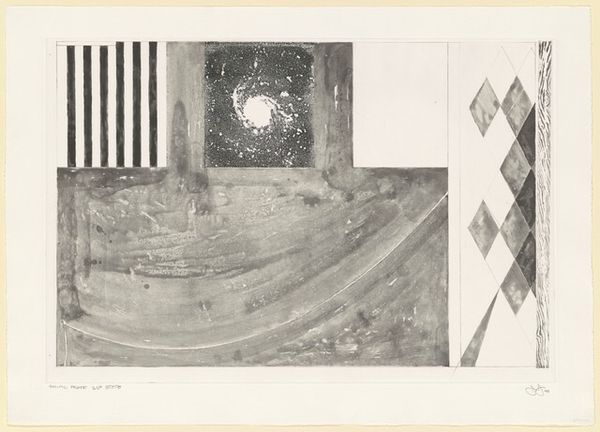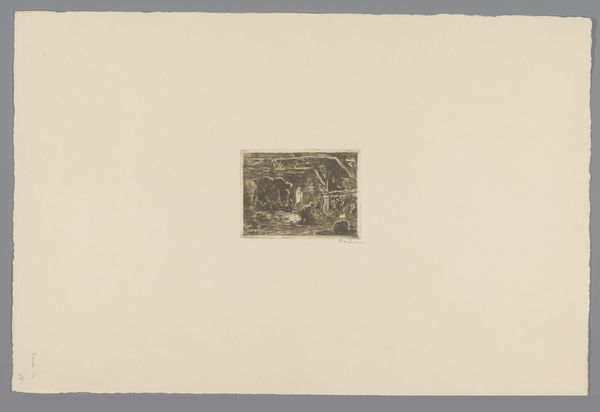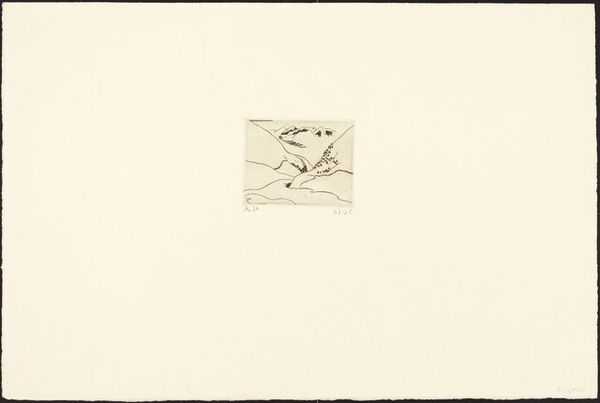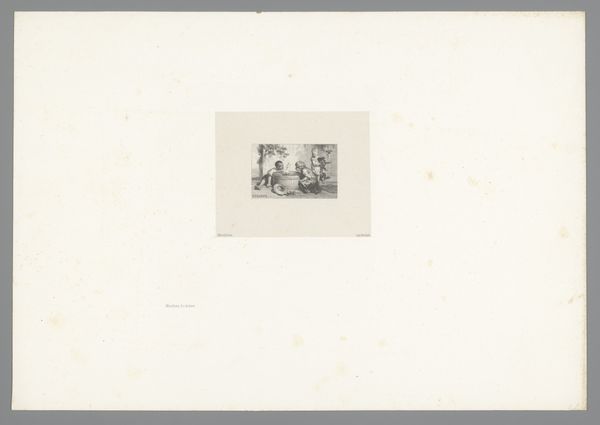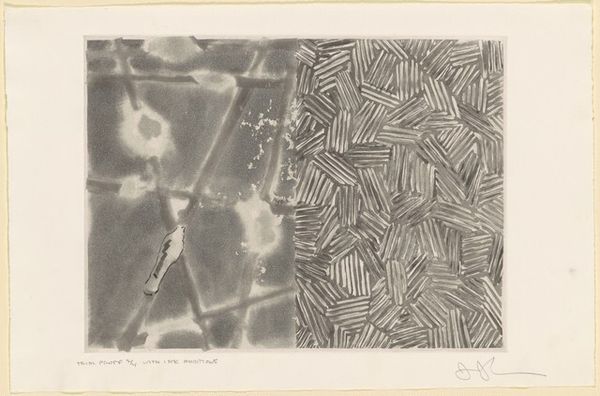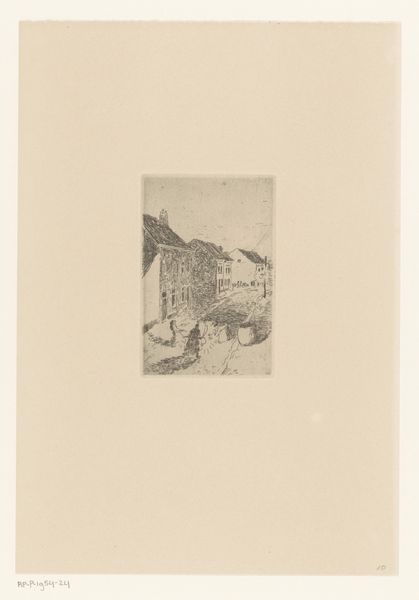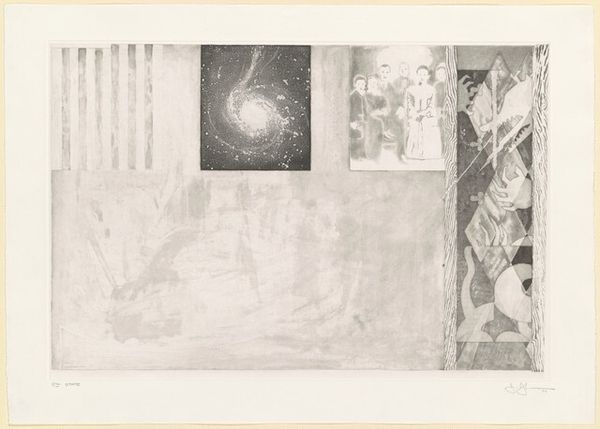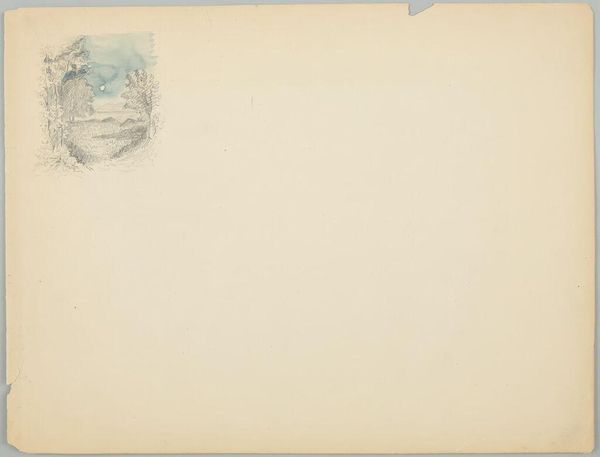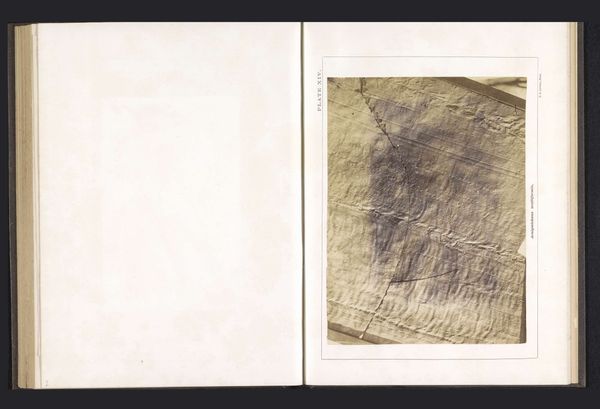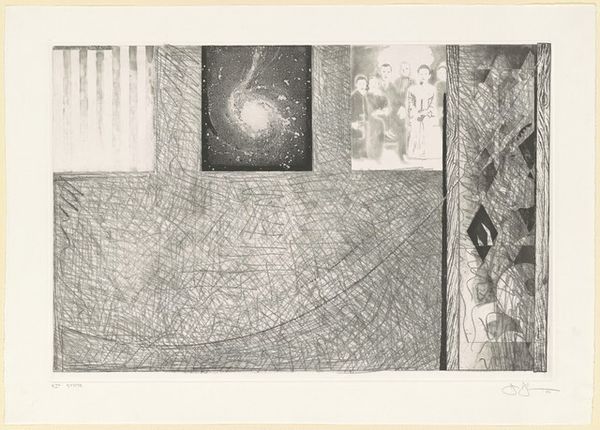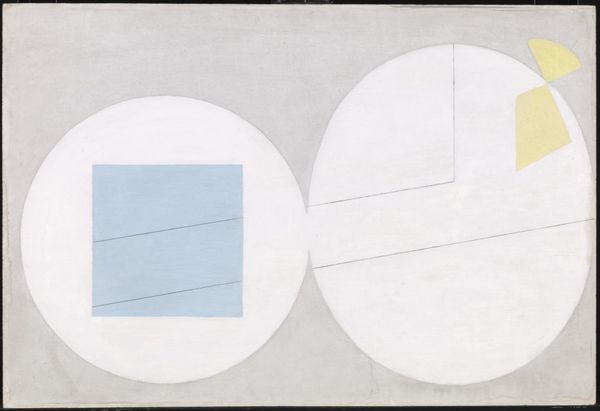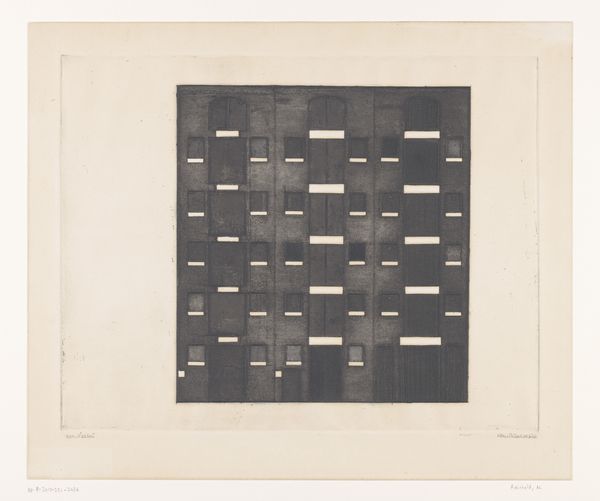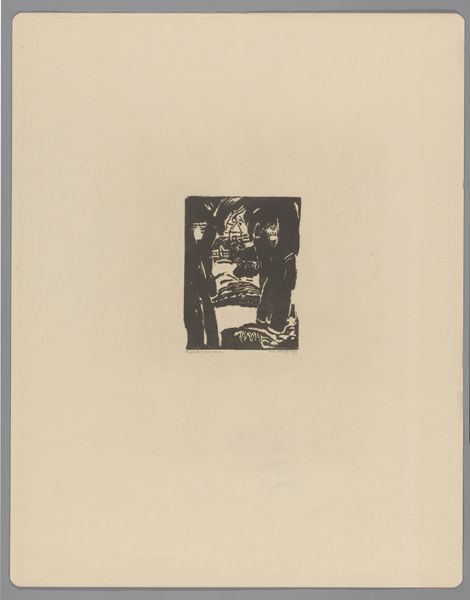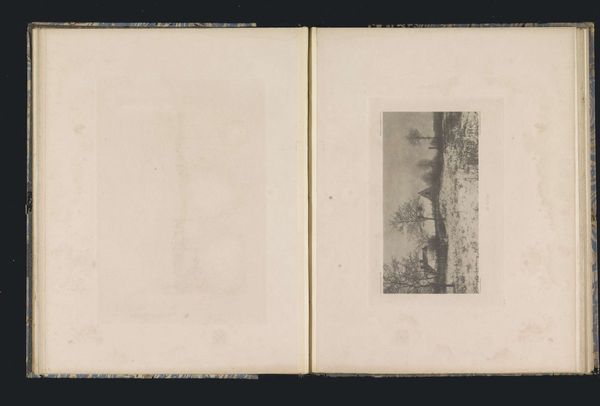![Untitled (Embassies) [trial proof 1st state] by Jasper Johns](/_next/image?url=https%3A%2F%2Fd2w8kbdekdi1gv.cloudfront.net%2FeyJidWNrZXQiOiAiYXJ0ZXJhLWltYWdlcy1idWNrZXQiLCAia2V5IjogImFydHdvcmtzLzI5ZDVmODg0LTYyMDQtNGQ4Zi05YTdiLWY0MGQxYWU5MWEwMC8yOWQ1Zjg4NC02MjA0LTRkOGYtOWE3Yi1mNDBkMWFlOTFhMDBfZnVsbC5qcGciLCAiZWRpdHMiOiB7InJlc2l6ZSI6IHsid2lkdGgiOiAxOTIwLCAiaGVpZ2h0IjogMTkyMCwgImZpdCI6ICJpbnNpZGUifX19&w=1920&q=75)
mixed-media, print, paper, monoprint, graphite
#
mixed-media
#
contemporary
#
conceptual-art
# print
#
paper
#
abstract
#
monoprint
#
neo-dada
#
geometric
#
graphite
#
modernism
Dimensions: plate: 30.8 × 79.06 cm (12 1/8 × 31 1/8 in.) sheet: 46.36 × 68.58 cm (18 1/4 × 27 in.)
Copyright: National Gallery of Art: CC0 1.0
Curator: Standing before us is Jasper Johns' "Untitled (Embassies) [trial proof 1st state]," a mixed-media monoprint on paper, created in 1999. It's a fascinating piece, particularly because of its geometric shapes, presented with a monochrome palette of black, white, and subtle grays. What catches your eye first? Editor: Well, it has this strange calmness. The sharp geometric elements juxtapose against that small image of what looks like a galaxy—a contrast that, paradoxically, stills me. Almost as if Johns were trying to create a meditative space within these confines. Curator: Exactly! Johns often plays with commonplace imagery and symbols to evoke deeper meanings. In this work, he presents a combination of elements, the meaning of which, or relationships among which, aren’t always straightforwardly presentable. You could describe this work as “abstract,” or “contemporary,” but given Johns's place in art history, the term “modernism” is appropriate, too. What do you feel the title "Embassies" contributes, or suggests? Editor: Knowing the title, I can't help but wonder if the geometric shapes, even that celestial swirl, are stand-ins for different cultures or nations. Embassies are, after all, where different worlds meet. The separateness, though, and also that visual static, implies that such relations might not be going too smoothly… the image isn’t celebratory. What is more, this is but the "first state." Perhaps we’re viewing a trial balloon, and what lies ahead will change? It could go anywhere from here, depending upon who raises or lowers what barrier. Curator: Interesting perspective. It highlights the political dimensions inherent in abstract forms, especially considering the social and political contexts in which Johns operated. He consistently pushed the boundaries of what art could be. How can we not think, when standing before it, of Duchamp’s ready-mades, for instance? By then it becomes even clearer that the everyday isn’t simply "there"—it, too, involves making. What could all this signify, in Johns’s vocabulary? It makes us look twice at the ways we organize, present, and regard such signs of the everyday. Editor: Ultimately, there is something comforting in the openness of it all. It invites, really demands, the viewer’s projection and interpretation to make it complete. That void or negative space does heavy duty! And how often are embassies voided of their true meaning! Curator: Very true. A profound silence permeates this work—but also, in that silence, so much opportunity for new thoughts. Editor: Beautifully put. And quite a potent piece, one might say, given the quietude.
Comments
No comments
Be the first to comment and join the conversation on the ultimate creative platform.
